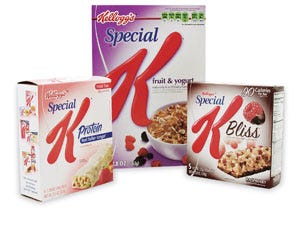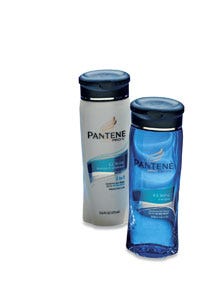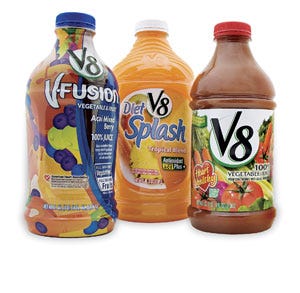March 11, 2015
|
Package design offers plenty of opportunities to build additional sales and reinforce consumer trust and loyalty attributes.
As companies strategize, plan and package new products or assess current products that need revitalization, they should think in terms of developing an overall package-design strategy.
Given the plethora of consumer products crowding every category, intensifying competition in the marketplace and lessening consumer loyalty, the failure to develop a design system may lead to sluggish sales or outright market failure for products carrying high expectations.
All of the advertising and multiple platform marketing in the world cannot ensure the success of poorly packaged products. Media campaigns are designed to bring consumers into retail stores to look for specific brands. However, consumers scanning store shelves make a purchasing decision very often at the point of sale, when confronted with myriad competitive products in tangible form.
The last 3 ft and several seconds to the retail shelf can make or break a sale. That's how crucial packaging is to the consumer in making a final purchasing decision. That's how important it is for consumer product goods manufacturers to get it right. With increasing pressure to maintain sales during periods of economic downturns, it's more important than ever to invest in a viable package design system and standardized style guide for every brand. Right now.
Research, then design
A brand's most powerful assets are uncovered by conducting research. Its overt and hidden drivers must be uncovered to enable packaging to align the brand with consumers' needs and aspirations. Then, tapping into cultural and lifestyle drivers reaches the targeted consumer on an emotional level. All of these considerations take place during the predesign research process.
Armed with profound brand and consumer insights and finding the place where they intersect enables package-design experts, in collaboration with product manufacturers, to develop an overall strategy as they revitalize packaging, add line extensions or fill the pipeline with new products. This strategy should lead to the development of strong and differentiated package-design systems and detailed style guides.
|
Functional package design systems and standardization through style guides lead to visual consistency. Visual consistency leads consumers to immediate brand and product recognition. When a properly positioned brand identity, graphic architecture, color, artwork, structure and communication hierarchy are part of a cohesive system, packaging maximizes the retail presence of a brand. And, it enhances consumers' experience with the brand.
Sounds simple. In theory, it is; in practice it's anything but. In many companies there is a tacit understanding that packaging has cost and revenue implications, as well as profit potential. However, due to demands from various managers, sales and marketing executives, conflicting demands arise that sometimes leads to that less than desirable scenario: one-off packaging. Likewise, when packaging products in various categories a number of issues arise, and those often lead to making final design decisions that result in one-off packaging. Again, it's best to avoid this result.
A well-conceived package design and a style guide ensuring standardization help avoid these inherent problems during the design-development process, save time and maximize the packaging development spend. A well-developed style guide takes the guesswork out of packaging new products by standardizing, yet allowing for flexibility.
Design system components
Key package design system components include: Brand and sub-brand identities; package design architecture; segmentation; imagery; and brand communication. By establishing consistency in these areas and standardizing them within a style guide, package designers and manufacturers basically give themselves working blueprints.
The resulting packaging, such as those represented by Kellogg's, Pantene and Campbell's V8, enables consumers to connect across the brand's entire product line.
|
Consistency and standardization don't have to be boring. Companies should consider developing structural packaging that becomes “ownable.” Distinctive structures can be developed for each product category. People are primarily visual. As shoppers, they're making purchasing decisions in scant seconds. Few packages can be scanned in that period of time—experts say consumers take in five or fewer. Packaging structures that involve a distinctive shape, graphic architecture and color palette enable consumers to easily and readily identify a specific brand. How important is that in a few seconds?
Brand identity, graphics and color used in a consistent manner for each product segment are crucial. Key brand communication in a well-designed hierarchy is easy to scan and quickly conveys the information consumers want to know about the product. Product imagery that speaks to consumers and clearly identifies with their target aspirations, desires, needs and lifestyle choices, helps seal the deal.
Segmentation should also be part of a packaging system strategy. Segmentation is necessary for packaged products that target different consumer groups under a brand umbrella. All products can be packaged in a readily identifiable and predictable manner as part of the overall brand.
By standardizing package design components in a style guide, the brand can be consistently leveraged. Without style guides, companies can make the mistake of developing one-off packaging solutions and lose the consumer in the process. A style guide also helps marketers avoid making the mistake of emulating competitors' latest packaging rather than being consistent in their own packaging. Constant packaging changes as a reaction to competition lead to confusion and have a detrimental effect on brand recognition.
Revitalization is necessary but should be managed, planned and well executed. A design system and style guide take the present and future needs for revitalization into account, and various products, package shapes, sizes and materials. Marketing segments due to new product lines that appeal to various consumer demographics, behaviors, attitudes or combinations of these require packaging variations that should also be allowed for in a style guide.
Packaging is a most important consumer touchpoint and the only marketing vehicle that actually delivers branded products in a tangible manner. It's a critical part of the overall brand expression continuum. Isn't it time to invest in immediate visual recognition in the sea of sameness? Isn't it worth investing in a design system and a style guide for your brand?
You May Also Like





